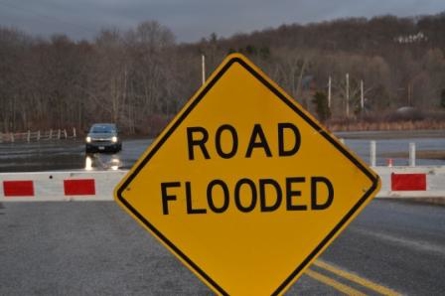A Homeowner's Guide to Dealing with Water Damage
This week, Massachusetts communities experienced a devastating bout of rainfall, leading to catastrophic flooding in local homes and businesses. Areas hit especially hard were the towns of North Attleboro and Leominster, seeing 6-8 inches of rain within 4 hours. Rivers, creeks, and dams could not keep up with the deluge of water and overflowed, prompting flash flood warnings. As a disaster restoration company, we have seen many storms in our 25 years of business and the resulting damage they cause. In this article, we'll provide homeowners in these affected areas and beyond with a comprehensive guide on how to recover from the recent storm-related water damage and get their properties back to their pre-flood condition.
Safety First
First and foremost, the safety of you and your family is paramount. If the flooding has caused significant structural damage or if there's still a risk of flooding, it's crucial to follow local authorities' guidance, which may include evacuation orders. Once it's deemed safe to return, carefully inspect your property for any hazards, such as downed power lines or unstable structures. Take precautions and do not enter areas with standing flood water as it often contains contaminants that are hazardous to your health.
Document the Damage
In the wake of the recent flooding, it's essential to document the water damage thoroughly before you begin any cleanup or repair efforts. Taking pictures and videos of the affected areas can be invaluable for insurance claims and can help professionals assess the extent of the damage accurately. If you remove any carpeting or flooring, be sure to keep a small sample of the materials.
Contact Your Insurance Company
Reach out to your insurance provider as soon as possible to report the water damage. Understand your policy coverage and deductible, and inquire about the steps you need to take for a successful claim. Make a detailed list of the damaged items and their approximate value to facilitate the claims process. Keep in mind that groundwater flooding is typically not covered by traditional homeowners insurance and may require additional flood insurance.
Turn Off Utilities
If it's safe to do so, turn off your electricity, gas, and water supply to prevent further damage or potential hazards. If you're unsure about how to perform these tasks, contact your utility companies or a professional for assistance. By turning off your electricity, you eliminate the risk of electrocution if standing water comes in contact with appliances or electrical outlets.
Remove Standing Water
In the aftermath of the recent flooding, you may still have standing water in your home or business. It's crucial to remove it promptly to prevent further damage. You can use a wet/dry vacuum, mop, or buckets, taking appropriate safety precautions such as wearing rubber boots and gloves.
Salvage Belongings
Start the process of salvaging items that haven't suffered severe damage due to flooding. Move them to a dry area and allow them to air out. Furniture, appliances, and personal belongings can sometimes be saved if you act quickly. This helpful guide can walk you through how to save water-damaged photos, books, or documents. Remove wet area rugs and prop up furniture on small wooden blocks. Open drawers, cabinets, and closets to promote airflow and enhance drying.
Begin Drying and Dehumidifying
The flooding likely left your property saturated with moisture. Use fans, dehumidifiers, and open windows to facilitate the drying process. Check the weather report and only open the windows if it is not a humid day. Swiftly eliminating excess moisture is essential to prevent mold and mildew growth.
Seek Help from a Disaster Restoration Company
Professional disaster restoration companies, well-versed in dealing with water damage from catastrophic flooding events, can provide essential assistance. They can conduct a thorough assessment, perform water extraction, structural drying, and mold remediation if necessary, helping you restore your property safely and efficiently.
Stay Informed, Be Patient, and Support One Another
Dealing with the aftermath of catastrophic flooding is a challenging and emotional process. It's vital to stay informed, follow local guidance, and maintain open communication with your insurance company throughout the recovery process. Additionally, supporting one another in times of crisis can make a significant difference in overcoming the challenges posed by such natural disasters.
Recovering from the recent catastrophic flooding in North Attleboro and Leominster, MA, and other affected areas requires a combination of safety precautions, documentation, and professional assistance. By following these steps and staying resilient, homeowners can navigate the challenges posed by storm-related water damage and work towards bringing their properties back to normal. If you need water damage restoration services, we can help. Contact us today.


